Overall Wide progress
The progress of the observations of the CFHTLS-Wide survey is discussed in details in the Wide Mid Survey review to the SAC
The main conclusion after 3 semesters is that the rate of acquisition of the Wide is much slower than planned. The hree main reasons for this are:
- The lower efficiency of the Megaprime system: the survey has been designed using an efficiency of 6.5 hours per night of open-shutter science exposures, and the measured efficiency has been between 3.3 and 4.3 hours per semester.
- The high pressure from time-constrained observations from the Deep and Very Wide survey.
- The uncertainty on the ability of the MegaPrime system to deliver adequate image quality for weak shear measurements.
As a result, the coverage of the three wide fields is much lower than planned.
W1 Status
The following figure displays the coverage of W1 that was expected on W1 at the end of 04B when the survey was planned. It was calculated using the observed number of QSO nights during semesters when W1 was visible, and assuming 6.5 hours per night of efficiency and a share of the Wide of 34% of the CFHTLS time. The assumed strategy was to:
- Perform the presurvey.
- Maximize the area covered in 5 bands by halving the exposure time in u and z for the first pass.
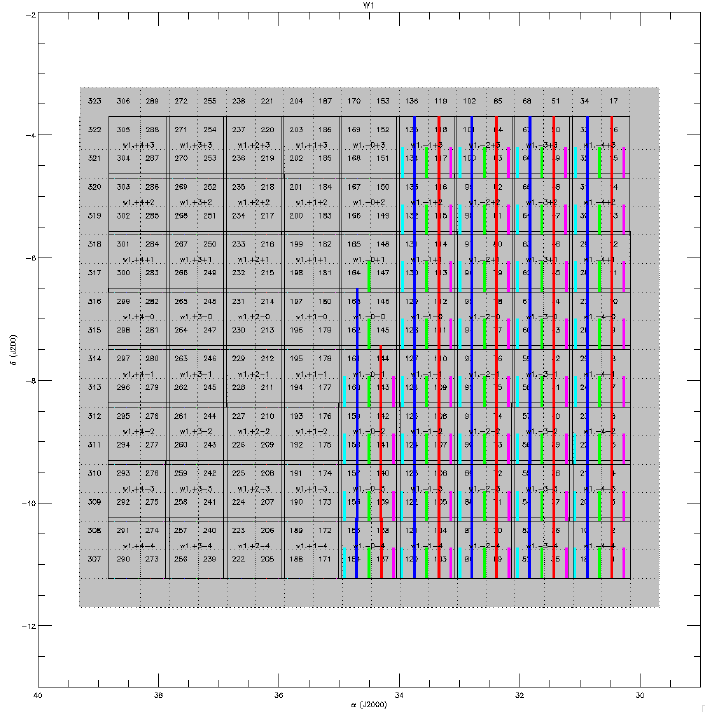 W1 Planned Coverage Planned coverage of the CFHTLS Wide Synoptic survey at the end of semester 04B. The legend of this figure is explicited in this article |
The following figure displays the status of the observations at the end of semester 04B. Given the lower efficiency of the observations noticed during semesters 03B and 04A, the Steering Group had decided to focus on obtaining the coverage of the XMM-LSS and Spitzer area during semester 04B in 5 bands.
These data will be part of the T002 release.
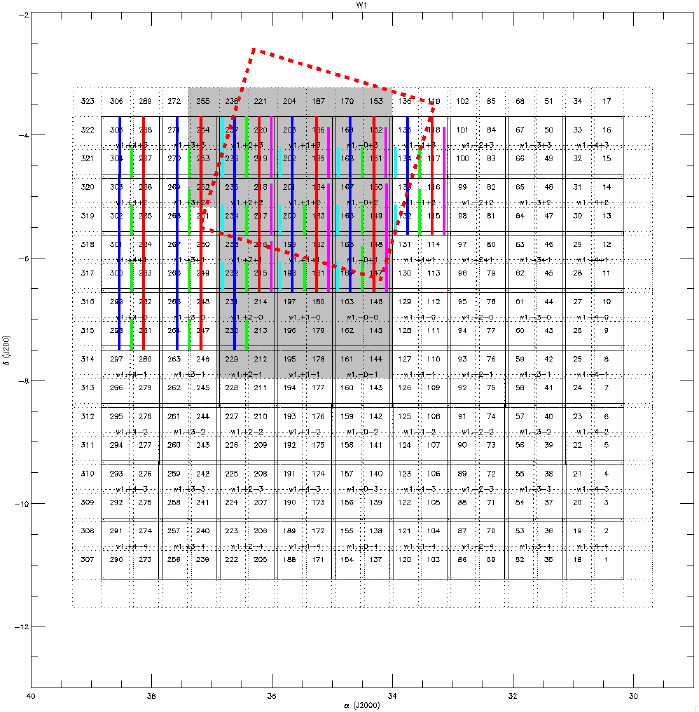 Status of the coverage of the CFHTLS-Wide W1 field at the end of semester 04B Status of the coverage of the CFHTLS Wide Synoptic survey W1 field at the end of semester 04B. The legend of this figure is explicited in this article. The dashed red square represent the area of W1 covered with Spitzer by the SWIRE legacy survey |
W2 Status
The W2 field as so far not received enough coverage for useful studies. This field is visible in winter and has suffered a lot of the bad weather that has prevailed in 04A, and has been mostly observed in the pre-survey configuration that is less demanding in terms of IQ.
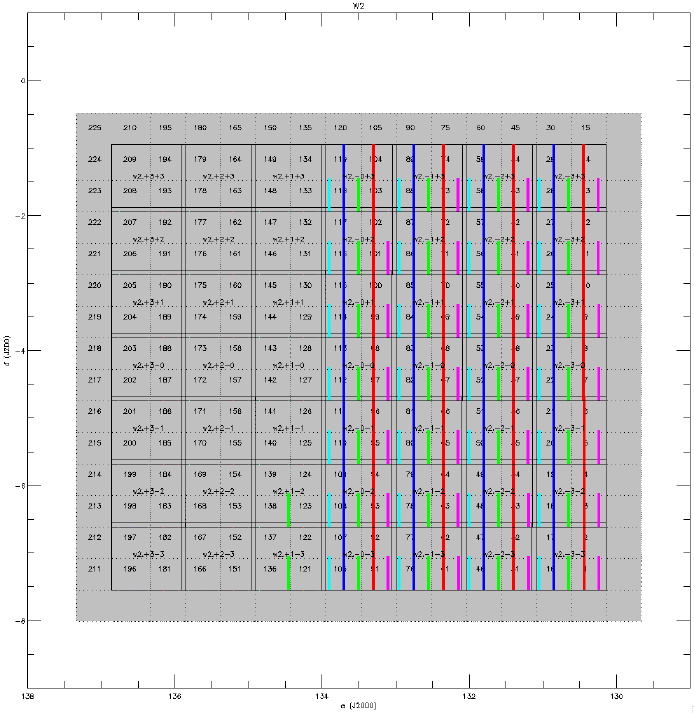 W2 Planned Coverage Planned coverage of the CFHTLS Wide Synoptic survey W2 field at the end of semester 04B. The legend of this figure is explicited in this article |
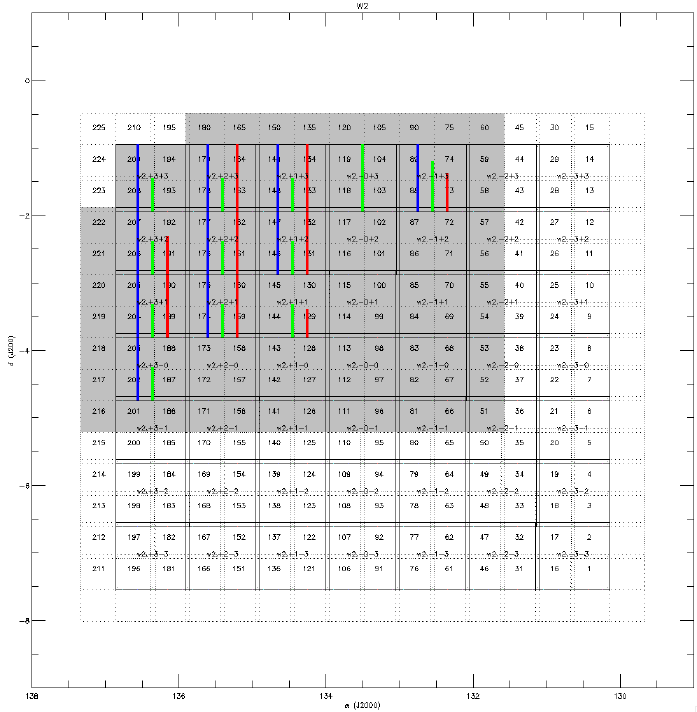 Status of the coverage of the W2 field at the end of semester 04B Status of the coverage of the CFHTLS Wide Synoptic survey W2 field at the end of semester 04B. The legend of this figure is explicited in this article. |
W3 Status
The W3 field has received some coverage in g, r and i, allowing for a contiguous area of 12 square degrees for weak shear studies. This is also far beyond the planned coverage after 3 semesters of observations.
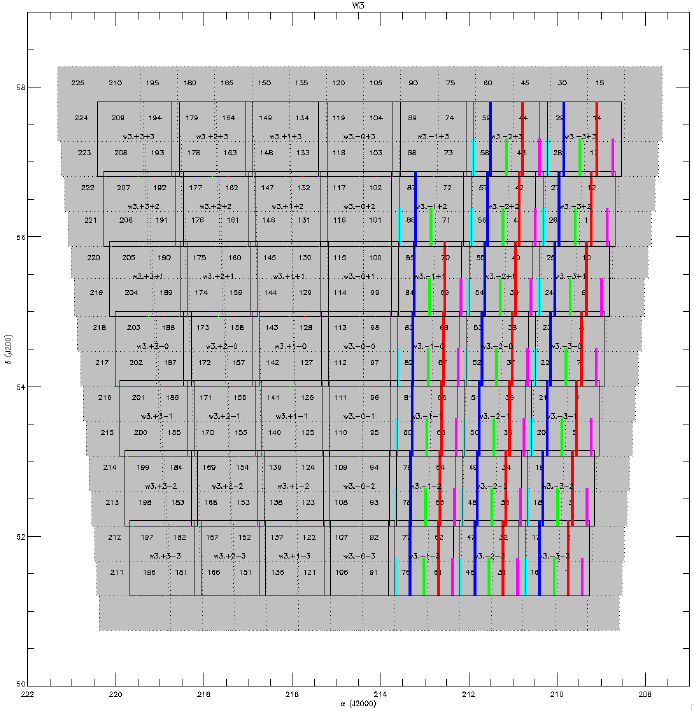 W3 Planned Coverage Planned coverage of the CFHTLS Wide Synoptic survey W2 field at the end of semester 04B. The legend of this figure is explicited in this article |
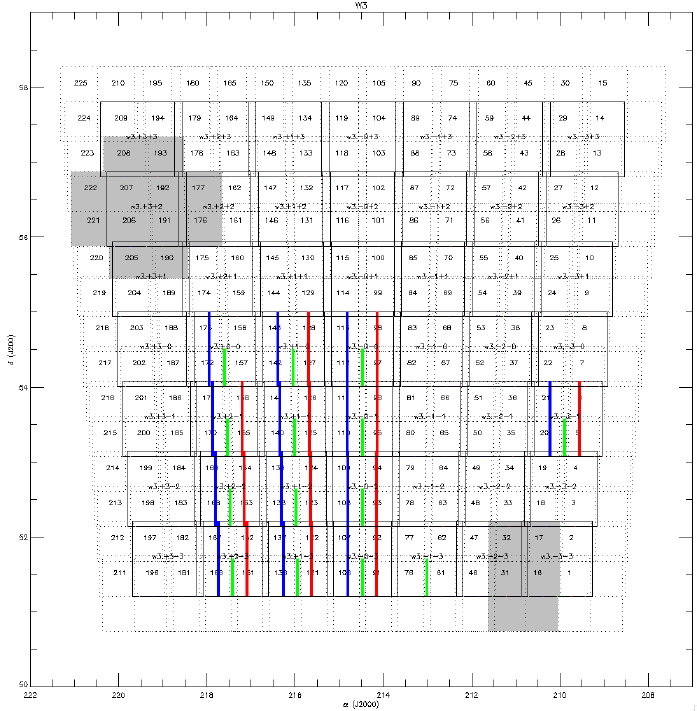 W3 Status at the end of 04B Status of the coverage of the CFHTLS Wide Synoptic survey W3 field at the end of semester 04B. The legend of this figure is explicited in this article. |
Comments ? Questions ? ![]()


